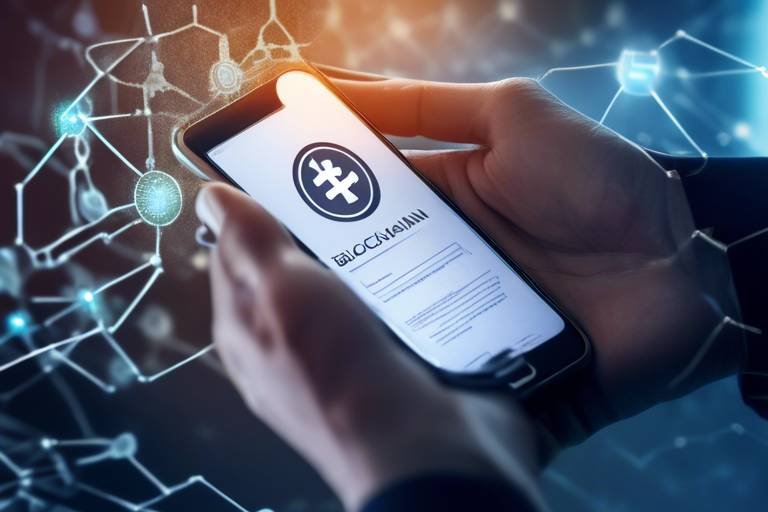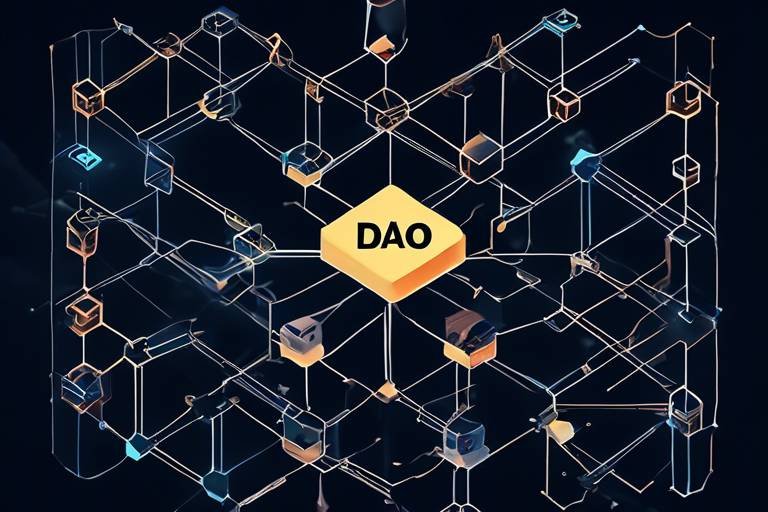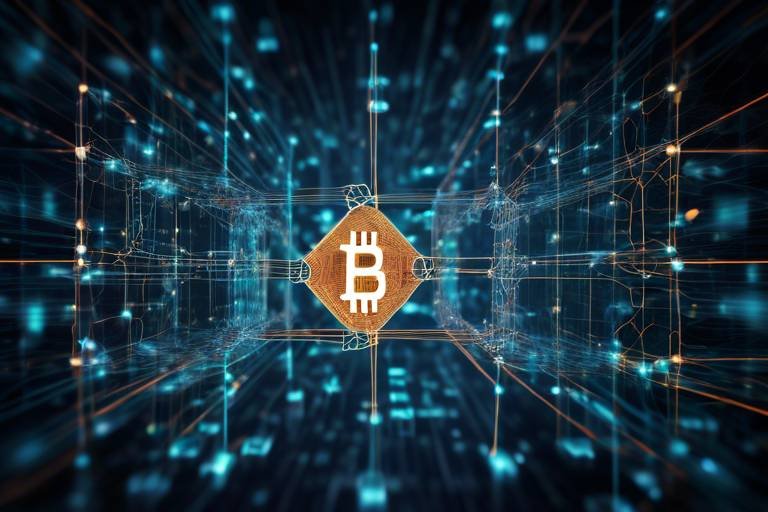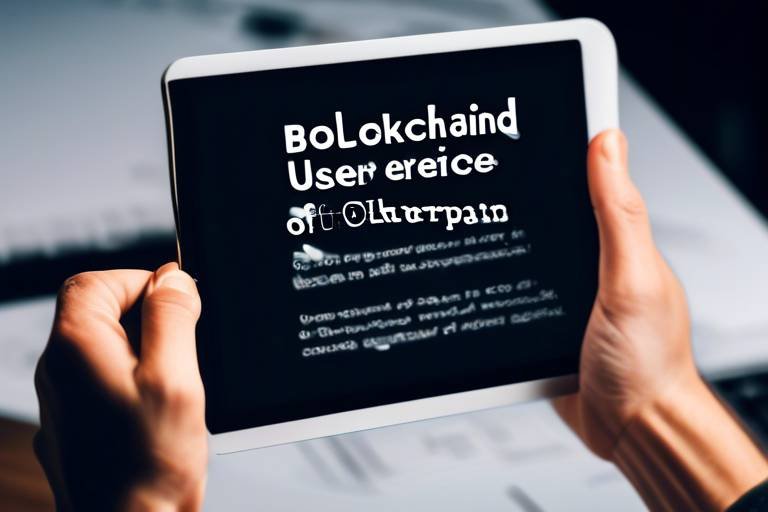How Blockchain is Enabling Secure Digital Certificates
In an age where digital interactions are the norm, the need for secure and reliable digital certificates has never been more paramount. Imagine a world where verifying someone's credentials is as simple as scanning a QR code, where the risk of forgery is virtually eliminated, and where the process is not only secure but also incredibly efficient. This is the promise of blockchain technology, a revolutionary system that is transforming how we issue, manage, and verify digital certificates across various sectors, including education, healthcare, and finance. By leveraging the power of decentralization and cryptographic security, blockchain is paving the way for a future where trust is inherent in every digital transaction.
Blockchain operates on a simple yet profound principle: it is a distributed ledger that records transactions across many computers in such a way that the registered transactions cannot be altered retroactively. This means that once a digital certificate is issued, it becomes part of a permanent record that is accessible to all authorized parties, ensuring transparency and accountability. The decentralized nature of blockchain eliminates the need for a central authority, which has traditionally been the gatekeeper in the issuance and verification of certificates. Instead, multiple parties can independently verify the authenticity of a certificate, making the process not only more secure but also more efficient.
Moreover, the application of blockchain in digital certificates is not just a passing trend; it is a game-changer. It enhances trust among stakeholders, reduces the risk of fraud, and streamlines verification processes, which can often be cumbersome and time-consuming. For instance, in the education sector, institutions can issue diplomas and certificates that are immediately verifiable by employers or other educational establishments. This not only saves time but also significantly reduces the chances of credential fraud, which has become alarmingly common in today's job market.
In healthcare, the implications are equally significant. Patient records and medical certifications can be securely stored on a blockchain, ensuring that they are tamper-proof and easily accessible by authorized personnel. This not only enhances patient privacy but also improves the overall efficiency of healthcare delivery. Imagine a doctor being able to verify a patient's medical history in real-time without the risk of encountering forged documents. This is the future that blockchain promises.
As we delve deeper into the intricacies of blockchain technology and its application in securing digital certificates, it's essential to recognize both the benefits and the challenges that come with this innovative approach. While the advantages are compelling, understanding the hurdles will provide a more balanced perspective on the adoption of blockchain in this critical area.
Understanding the fundamental principles of blockchain technology is crucial for grasping its application in digital certificates. This section will cover how blockchain works and its decentralized nature.
Digital certificates offer numerous advantages over traditional methods, including improved security, efficiency, and accessibility. This section will delve into the key benefits that make digital certificates an attractive option.
One of the main advantages of digital certificates is their enhanced security. This subsection will discuss how blockchain technology protects against fraud and unauthorized access.
Blockchain's immutable nature ensures that once a digital certificate is issued, it cannot be altered or tampered with. This section will explain the significance of immutability in maintaining trust.
Decentralization allows for more reliable verification processes. This subsection will explore how blockchain enables multiple parties to validate certificates without a central authority.
Blockchain-enabled digital certificates are being adopted across various sectors. This subsection will highlight specific use cases in education, healthcare, and finance.
Despite its potential, the implementation of blockchain for digital certificates faces challenges. This section will address some of the key obstacles and limitations that need to be overcome.
Regulatory frameworks surrounding blockchain technology are still evolving. This subsection will discuss the implications of current regulations on the adoption of digital certificates.
Technological challenges, such as scalability and interoperability, can hinder the widespread adoption of blockchain for digital certificates. This section will examine these barriers in detail.
1. What is a digital certificate?
A digital certificate is an electronic document used to prove the ownership of a public key. It includes information about the key, the identity of its owner, and the digital signature of an entity that has verified the certificate's contents.
2. How does blockchain enhance the security of digital certificates?
Blockchain enhances security by providing a decentralized and immutable ledger, making it nearly impossible to alter or forge certificates once they are issued.
3. What industries are benefiting from blockchain-enabled digital certificates?
Industries such as education, healthcare, and finance are seeing significant benefits from blockchain-enabled digital certificates, improving trust and verification processes.
4. What challenges does blockchain face in the adoption of digital certificates?
Key challenges include regulatory concerns and technological barriers such as scalability and interoperability, which need to be addressed for widespread adoption.

The Basics of Blockchain Technology
Understanding the fundamentals of blockchain technology is essential when exploring its application in securing digital certificates. At its core, blockchain is a decentralized digital ledger that records transactions across multiple computers in such a way that the registered transactions cannot be altered retroactively. This means that once a piece of information is added to the blockchain, it is there permanently and can only be changed through consensus among the participants in the network.
Imagine a public library where every book is a transaction. Instead of having a single librarian keeping track of all the books, every visitor can see which books are available, who has borrowed them, and when they are due back. This transparency is the beauty of blockchain. It allows every participant to have access to the same information, ensuring that everyone is on the same page. The decentralized nature of blockchain technology eliminates the need for a central authority, making it resistant to fraud and manipulation.
Blockchain operates through a series of blocks that contain data, a timestamp, and a unique cryptographic hash of the previous block, forming a chain. This structure is what gives blockchain its name. Each block strengthens the security of the previous block, creating a secure and immutable record of transactions. The process of adding new blocks requires a consensus mechanism, such as proof of work or proof of stake, which ensures that all participants agree on the validity of the transactions being recorded.
One of the most significant features of blockchain technology is its transparency. Every transaction is visible to all participants in the network, which fosters trust. For instance, in the context of digital certificates, educational institutions can issue certificates directly onto the blockchain, allowing employers to verify a candidate's qualifications without the need for third-party verification services. This not only speeds up the verification process but also reduces the chances of fraud.
In summary, blockchain technology is a groundbreaking innovation that is transforming how we think about data security and verification. Its decentralized, transparent, and immutable characteristics make it an ideal solution for securing digital certificates across various sectors. As we delve deeper into the benefits and use cases of digital certificates, it's crucial to keep these foundational principles in mind.

Benefits of Digital Certificates
In an era where everything is becoming digital, digital certificates have emerged as a revolutionary tool that brings a plethora of advantages over traditional methods. Imagine a world where verification is instantaneous, secure, and devoid of the usual bureaucratic hassles. That’s what digital certificates offer! They streamline processes, enhance security, and make access to crucial information easier than ever before. This section dives deep into the myriad benefits that make digital certificates not just an option, but a necessity in today’s digital landscape.
One of the standout features of digital certificates is their improved security. Unlike paper certificates that can be easily forged or altered, digital certificates leverage the power of blockchain technology. This means that each certificate is cryptographically secured, making it nearly impossible for anyone to tamper with the information contained within it. For instance, in the educational sector, a digital diploma could be verified in seconds, eliminating the risk of fraud that often plagues traditional degree verification processes.
Additionally, digital certificates enhance efficiency. With traditional methods, obtaining a certificate often involves a lengthy process filled with paperwork and waiting times. However, with a digital certificate, the process is streamlined. Everything is stored on a decentralized network, allowing for quick access and verification. Imagine applying for a job and being able to provide your credentials with just a click! This efficiency not only saves time but also reduces costs associated with printing and mailing physical certificates.
Accessibility is another crucial benefit. Digital certificates can be accessed anytime and anywhere, as long as there’s an internet connection. This is particularly beneficial in today’s globalized world where people often move across borders for education or work. For example, a healthcare professional can easily share their credentials with potential employers or licensing boards, regardless of their location. No more waiting for physical documents to arrive in the mail!
Moreover, the environmental impact of digital certificates cannot be overlooked. By reducing the reliance on paper, we contribute to a more sustainable future. Think about it: fewer trees cut down, less energy used in printing, and a significant reduction in waste. It’s a win-win situation for both individuals and the planet.
To sum it up, the benefits of digital certificates are vast and impactful. They not only enhance security and efficiency but also improve accessibility and promote sustainability. As we continue to embrace digital transformation, the adoption of digital certificates will undoubtedly play a pivotal role in shaping a more secure and efficient world.
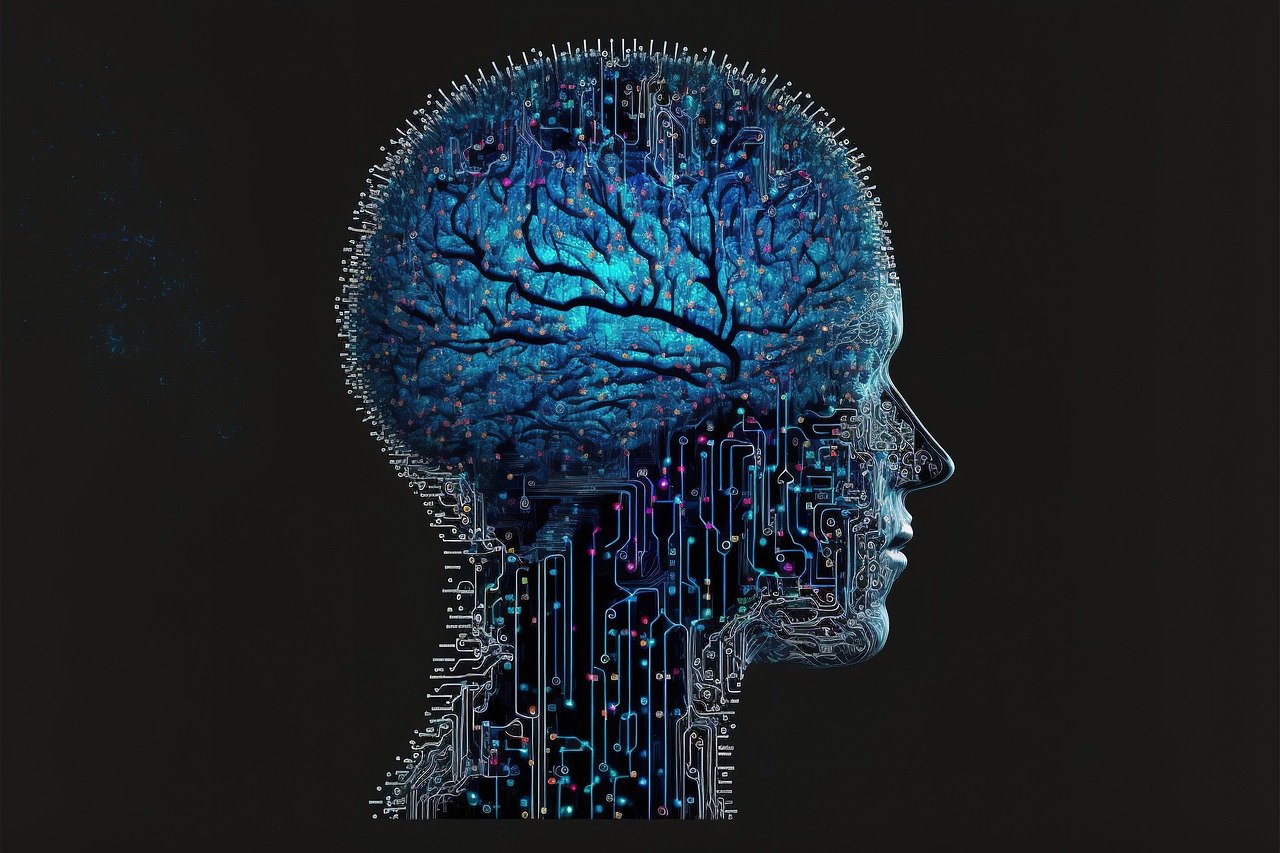
Enhanced Security Features
When we talk about security in the digital realm, the conversation often leads us to the topic of digital certificates. These certificates are much more than just fancy PDFs or digital signatures; they are the backbone of trust in online transactions. One of the standout features of digital certificates powered by blockchain technology is their enhanced security. So, what makes these certificates so secure? Let’s dive deeper into the layers of protection that blockchain offers.
First off, we need to understand that blockchain operates on a decentralized network. Unlike traditional systems that rely on a central authority to issue and verify certificates, blockchain allows for a distributed ledger where every transaction is recorded across multiple nodes. This means that no single entity has control over the data, making it incredibly difficult for malicious actors to alter or forge certificates. Imagine a library where every book is copied and stored in different locations; if someone tries to change a book in one location, it would be instantly noticeable because the other copies would remain unchanged.
Another critical aspect of enhanced security in digital certificates is the use of cryptographic techniques. Blockchain employs advanced cryptography to secure the data within each certificate. This means that even if someone manages to access the certificate, they would find it nearly impossible to decipher the information without the appropriate keys. Think of it like a treasure chest that can only be opened with a unique key. Even if someone finds the chest, without the key, they can't access what's inside.
Moreover, the concept of immutability plays a significant role in the security of blockchain-based digital certificates. Once a certificate is issued and recorded on the blockchain, it becomes a permanent part of the ledger. This means that it cannot be altered or deleted without the consensus of the network. If you’ve ever tried to erase something from a chalkboard, you know how easy it is to make a mistake. Now, imagine if that chalkboard was made of stone instead; any attempt to change the information would be visible forever. This immutability ensures that the history of every certificate is preserved, thus enhancing trust among users.
To summarize, the enhanced security features of blockchain-enabled digital certificates can be encapsulated in the following key points:
- Decentralization: No single point of control, reducing the risk of fraud.
- Cryptographic Security: Advanced encryption techniques safeguard data.
- Immutability: Once issued, certificates cannot be altered or deleted.
In conclusion, the enhanced security features of blockchain technology transform digital certificates into a reliable and trustworthy solution for various industries. As we continue to navigate the complexities of the digital world, these certificates will undoubtedly play a pivotal role in ensuring that our online transactions remain secure and verifiable.

Immutable Records
The concept of is one of the cornerstones of blockchain technology, and it plays a pivotal role in enhancing the security of digital certificates. Imagine a digital certificate as a unique fingerprint—once it’s created, it cannot be altered or erased. This is possible due to the way blockchain is structured. Each record, or block, is linked to the previous one, forming a secure chain that is virtually impossible to tamper with. In a world where fraud and forgery are rampant, the ability to maintain an unchangeable record of ownership and authenticity is revolutionary.
When a digital certificate is issued on a blockchain, it is assigned a unique cryptographic hash that acts as its digital fingerprint. This hash is not just a random string of characters; it contains information about the certificate itself, including who issued it, to whom it was issued, and when. Once this information is recorded, it becomes a permanent part of the blockchain. Any attempt to alter the certificate would change its hash, making it immediately obvious that something is amiss. This feature is crucial for maintaining trust in the system, as it ensures that all parties involved can verify the authenticity of the certificate without the fear of manipulation.
Moreover, the significance of immutability extends beyond just security; it fosters a culture of transparency and accountability. When institutions, whether educational or governmental, issue certificates on a blockchain, they are essentially saying, “This record is here to stay.” It allows employers, schools, and other entities to verify the credentials of individuals with confidence, knowing that the information they are accessing is accurate and reliable. In a sense, it’s like having a digital vault that holds your credentials securely, ensuring that they are protected from unauthorized changes.
To illustrate how immutable records can transform traditional verification processes, consider the following table:
| Traditional Method | Blockchain Method |
|---|---|
| Certificates can be lost or forged. | Immutable records ensure authenticity and prevent forgery. |
| Verification often requires contacting the issuing authority. | Instant verification through blockchain without third-party intervention. |
| Records can be altered or deleted. | Once recorded, the information cannot be changed or erased. |
In summary, the power of immutable records in blockchain technology is not just a technical feature; it’s a fundamental shift in how we think about ownership, trust, and verification. By ensuring that once a digital certificate is issued it remains unchanged, blockchain technology is paving the way for a more secure and trustworthy digital landscape. As we continue to explore the potential of blockchain in various sectors, the importance of immutability will only grow, reinforcing the need for secure and reliable methods of credential verification.
- What is an immutable record? An immutable record is a piece of data that cannot be altered or deleted once it has been recorded, ensuring its authenticity and integrity.
- How does blockchain ensure immutability? Blockchain uses cryptographic hashing and a linked structure of blocks to create a secure chain of records that cannot be tampered with.
- Why is immutability important for digital certificates? It prevents fraud and forgery, allowing for reliable verification of credentials and enhancing trust among users.

Decentralized Verification
When we talk about , we are diving into one of the most revolutionary aspects of blockchain technology. Imagine a world where you no longer have to rely on a single entity to validate your credentials. Instead, multiple parties can independently verify the authenticity of a digital certificate. This not only enhances trust but also significantly reduces the chances of fraud. In traditional systems, verification often involves a lengthy process where a centralized authority holds all the power. This can lead to bottlenecks, delays, and even corruption. However, with blockchain, the power is distributed across a network of computers, or nodes, making the process much more efficient and reliable.
So, how does this decentralized verification work in practice? Each digital certificate is stored on the blockchain, and the information is accessible to all authorized parties. When someone needs to verify a certificate, they can quickly check the blockchain to confirm its validity. This process is not only fast but also transparent, as every transaction is recorded and cannot be altered. For example, in the education sector, when a student graduates, their certificate can be issued on the blockchain. Employers can then verify the certificate without needing to contact the educational institution directly. This saves time and resources for everyone involved.
Moreover, decentralized verification fosters collaboration among different stakeholders. It creates a network effect where the more people participate, the more secure and trustworthy the system becomes. Think of it like a community watch program: when everyone is looking out for each other, it becomes much harder for any bad actors to succeed. In the case of digital certificates, this means that if one party attempts to issue a fraudulent certificate, the rest of the network can quickly identify and reject it. This collective vigilance is one of the key strengths of blockchain technology.
In addition to enhancing security and trust, decentralized verification also streamlines processes. By cutting out the middleman, organizations can save time and reduce costs. For instance, in the healthcare industry, patient records can be verified and shared among different healthcare providers without the need for extensive paperwork and phone calls. This not only improves patient care but also ensures that sensitive information remains secure.
To summarize, decentralized verification is a game-changer in the world of digital certificates. It empowers individuals and organizations by providing a more secure, efficient, and trustworthy way to validate credentials. As blockchain technology continues to evolve, we can expect to see even more innovative applications of decentralized verification across various industries.
- What is decentralized verification? Decentralized verification is a process where multiple parties can independently validate the authenticity of a digital certificate without relying on a central authority.
- How does blockchain enhance security? Blockchain provides an immutable and transparent record of transactions, making it difficult for unauthorized changes or fraud to occur.
- What are the benefits of using digital certificates? Digital certificates offer improved security, efficiency, accessibility, and reduced costs compared to traditional verification methods.
- Can decentralized verification be applied in different industries? Yes, decentralized verification can be utilized in various sectors, including education, healthcare, and finance, to enhance trust and streamline processes.

Use Cases in Various Industries
Blockchain technology is revolutionizing the way digital certificates are issued and verified across multiple sectors. Imagine a world where your academic credentials, medical records, and financial transactions are not only secure but also instantly verifiable with just a few clicks. This is not a distant future; it's happening right now! Let's dive into some real-world applications of blockchain-enabled digital certificates in various industries, showcasing how they enhance trust and efficiency.
In the education sector, institutions are increasingly adopting blockchain to issue diplomas and certificates. Traditional methods of verification often involve tedious processes that can take days or even weeks, leading to frustration for both graduates and employers. However, with blockchain, once a certificate is issued, it is recorded on a decentralized ledger that can be accessed by anyone, anywhere, anytime. This means that potential employers can verify a candidate's qualifications instantly, reducing the risk of fraud and ensuring that only genuine credentials are recognized. For instance, the University of Nicosia in Cyprus has already begun issuing diplomas on the blockchain, setting a precedent for educational institutions worldwide.
Moving on to the healthcare industry, the importance of secure and verifiable medical records cannot be overstated. Patients often find themselves in situations where they need to share their medical history with new healthcare providers, and the current methods of transferring this information can be cumbersome and insecure. Blockchain technology allows for the creation of immutable medical records that patients can control. They can grant access to their healthcare providers without worrying about unauthorized alterations. A notable example is the collaboration between healthcare companies and blockchain startups to create platforms that securely manage patient data, ensuring it is both accessible and tamper-proof.
In the finance sector, digital certificates play a crucial role in transactions and compliance. Financial institutions are leveraging blockchain to issue certificates for various transactions, including loans, securities, and even identity verification. This not only streamlines the process but also enhances security against fraud. For example, the use of blockchain for issuing and verifying letters of credit has gained traction, allowing businesses to reduce the time and costs associated with international trade. By utilizing blockchain, banks can ensure that these documents are secure and can be verified by all parties involved without the need for intermediaries.
Moreover, the application of blockchain extends beyond these industries. In sectors like real estate, supply chain management, and even voting systems, digital certificates are proving to be game-changers. The ability to verify ownership and provenance through a secure and transparent ledger is invaluable. For instance, in real estate, blockchain can simplify property transactions by providing a clear, tamper-proof record of ownership, thus reducing disputes and fraud.
As we can see, the use cases for blockchain-enabled digital certificates are vast and varied. They not only enhance security but also promote efficiency and trust across different sectors. The future looks promising as more industries begin to recognize the potential of this technology to transform their operations.
- What are digital certificates? Digital certificates are electronic documents that use cryptography to provide secure and verifiable credentials.
- How does blockchain enhance the security of digital certificates? Blockchain provides an immutable and decentralized ledger, making it nearly impossible to alter or forge certificates.
- Which industries are adopting blockchain for digital certificates? Industries such as education, healthcare, finance, real estate, and supply chain management are leading the way in adopting this technology.
- Are there challenges to implementing blockchain for digital certificates? Yes, challenges include regulatory concerns and technological barriers such as scalability and interoperability.

Challenges and Limitations
While blockchain technology holds immense promise in securing digital certificates, it is not without its challenges and limitations. One of the primary obstacles is the regulatory landscape. As governments and regulatory bodies grapple with the implications of blockchain, the lack of clear guidelines can create uncertainty for organizations looking to adopt this innovative technology. Without a solid regulatory framework, businesses may hesitate to fully invest in blockchain solutions, fearing potential legal repercussions.
Moreover, the technological barriers related to scalability and interoperability present significant hurdles. Blockchain networks can face performance issues as the volume of transactions increases, leading to delays and inefficiencies. For example, while Bitcoin can handle about seven transactions per second, traditional payment systems like Visa can process thousands. This disparity raises questions about whether blockchain can keep pace with the demands of large-scale implementations.
Interoperability is another concern. Different blockchain platforms often operate in silos, making it challenging to establish connections between them. This lack of compatibility can hinder the seamless exchange of digital certificates across various systems and industries. Imagine trying to send a message from one app to another that doesn’t speak the same language—frustrating, right? That’s the kind of issue organizations face when attempting to integrate blockchain solutions.
Furthermore, there is a knowledge gap in understanding blockchain technology among stakeholders. Many organizations lack the expertise needed to implement and maintain blockchain systems effectively. This gap can lead to poorly executed projects that fail to deliver the expected benefits, resulting in wasted resources and lost opportunities. To bridge this gap, educational initiatives and training programs are essential to equip professionals with the necessary skills.
Lastly, the public perception of blockchain technology can also pose challenges. Many people still associate blockchain primarily with cryptocurrencies, which can lead to skepticism regarding its application in other sectors. Overcoming this perception requires a concerted effort to educate the public about the broader benefits of blockchain, particularly in enhancing security and trust in digital certificates.
- What are the main challenges of implementing blockchain for digital certificates?
The main challenges include regulatory uncertainties, technological barriers related to scalability and interoperability, a knowledge gap among stakeholders, and public perception issues. - How does regulatory uncertainty affect blockchain adoption?
Without clear regulations, organizations may be hesitant to invest in blockchain solutions due to fears of legal repercussions or compliance issues. - What is interoperability, and why is it important?
Interoperability refers to the ability of different blockchain systems to work together. It is crucial for the seamless exchange of digital certificates across various platforms. - How can organizations overcome the knowledge gap in blockchain technology?
Organizations can invest in educational initiatives and training programs to equip their teams with the necessary skills to implement and manage blockchain solutions effectively.

Regulatory Concerns
When it comes to the adoption of blockchain technology for digital certificates, one of the most pressing issues is the regulatory landscape. As this innovative technology continues to evolve, so too do the laws and regulations that govern it. This creates a challenging environment for organizations looking to implement blockchain solutions. The lack of a clear and consistent regulatory framework can lead to uncertainty, which, in turn, may hinder the widespread acceptance of blockchain-enabled digital certificates.
Regulatory bodies around the world are still grappling with how to classify and manage blockchain technology. In many cases, these entities are attempting to catch up with the rapid pace of technological advancement. For instance, while some countries are embracing blockchain and establishing friendly regulations, others are taking a more cautious approach, fearing potential risks such as fraud, money laundering, and data privacy breaches.
Moreover, the global nature of blockchain adds another layer of complexity. Different countries have varying regulations regarding data protection, digital identity, and electronic signatures. This inconsistency can create a fragmented regulatory environment, making it difficult for organizations to navigate compliance across borders. For example, a digital certificate issued in one country may not be recognized in another due to differing laws regarding electronic documentation.
To better understand these challenges, consider the following key regulatory concerns:
- Data Privacy: With the implementation of regulations such as the General Data Protection Regulation (GDPR) in Europe, organizations must ensure that they are compliant when handling personal data on the blockchain.
- Legal Recognition: The legal status of blockchain-based certificates varies by jurisdiction, raising questions about their enforceability in legal proceedings.
- Consumer Protection: As blockchain technology becomes more prevalent, regulators are tasked with ensuring that consumers are protected from potential fraud and misuse.
In conclusion, while blockchain technology has the potential to revolutionize the issuance and verification of digital certificates, the regulatory concerns surrounding its implementation cannot be overlooked. Organizations must stay informed about the evolving regulatory landscape and work closely with legal experts to navigate these challenges effectively. Only through collaboration between tech innovators and regulatory bodies can we hope to establish a framework that supports the growth of blockchain technology while ensuring safety and compliance for all stakeholders involved.
- What are digital certificates? Digital certificates are electronic credentials used to verify the identity of individuals or organizations online, often utilized in secure communications and transactions.
- How does blockchain enhance the security of digital certificates? Blockchain provides a decentralized and immutable ledger that protects against fraud and unauthorized alterations, ensuring the integrity of digital certificates.
- What are the main regulatory concerns regarding blockchain? Key concerns include data privacy, legal recognition of blockchain documents, and consumer protection from fraud.
- Can blockchain technology be adopted globally? While blockchain has global potential, the varying regulatory frameworks across countries can complicate its unified adoption.
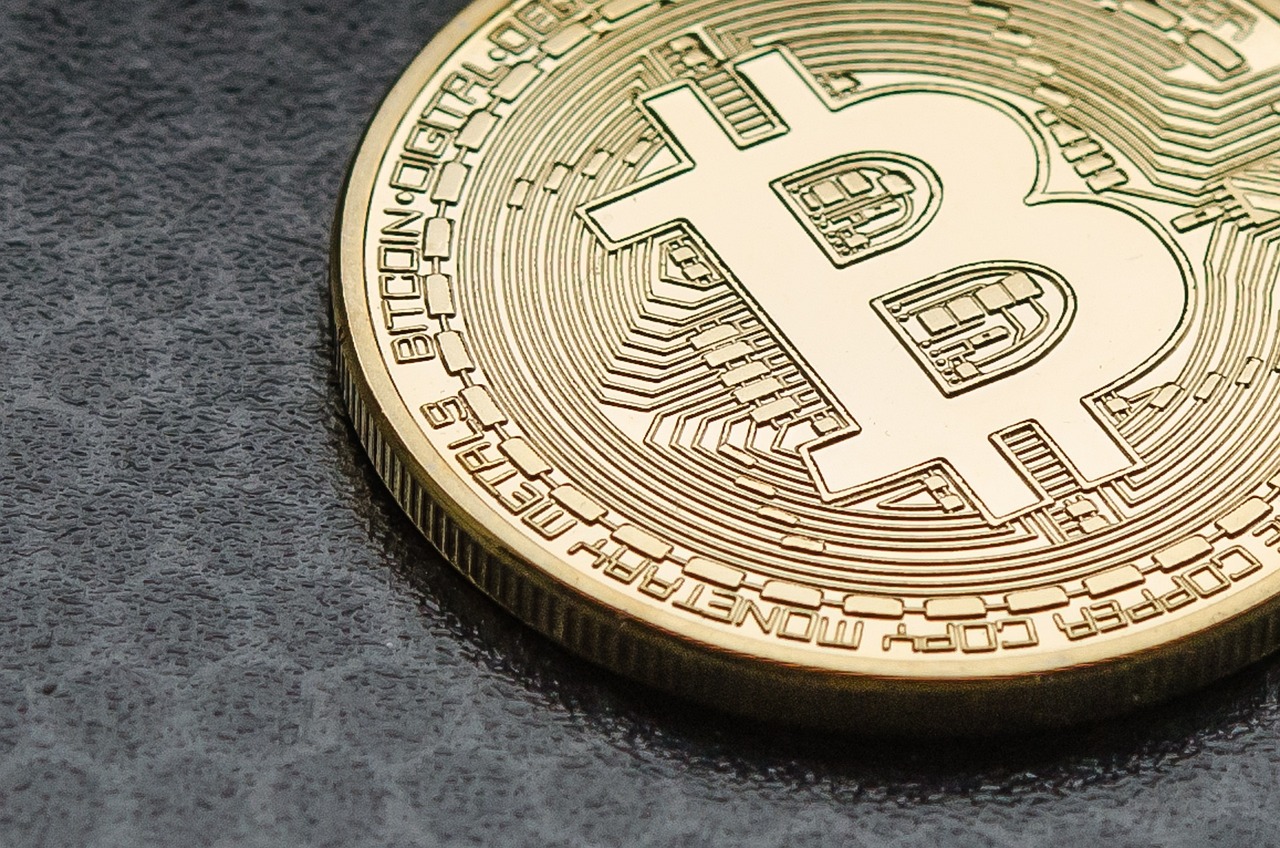
Technological Barriers
As promising as blockchain technology is for securing digital certificates, it doesn't come without its own set of challenges. One of the most significant hurdles is the issue of scalability. Imagine a bustling train station during rush hour; if the platforms can't accommodate the influx of passengers, chaos ensues. Similarly, blockchain systems must be able to handle large volumes of transactions without a hitch. Current blockchain networks, such as Bitcoin and Ethereum, often struggle with speed and efficiency during peak times, leading to delays and increased transaction costs.
Another technological barrier is interoperability. In a world where different blockchain networks operate independently, the ability for these networks to communicate with one another is crucial. Think of it like trying to connect different brands of smartphones; if they can't sync up, you're left with a frustrating experience. For digital certificates to be widely accepted and utilized across various sectors, there needs to be a standardized way for these systems to interact. Without this, organizations may hesitate to adopt blockchain solutions, fearing that their certificates won't be recognized outside their own network.
Moreover, there's the challenge of user adoption. For many individuals and organizations, the concept of blockchain can seem daunting. It's like learning a new language; without proper guidance and support, it can be overwhelming. Educational initiatives and user-friendly interfaces are essential to demystify blockchain technology and encourage its adoption. If users can't easily navigate blockchain systems, they may opt for more traditional methods, which can stifle innovation.
Lastly, we can't ignore the cost implications associated with implementing blockchain solutions. While the long-term benefits are clear, the initial investment can be a significant barrier for many organizations, especially smaller ones. It's akin to buying a high-end bicycle; the upfront cost may deter you, even if you know it will save you money on transportation in the long run. Organizations must weigh the costs against potential savings and benefits, which can lead to hesitation in adopting blockchain for digital certificates.
In summary, while blockchain technology holds incredible potential for enhancing the security and efficiency of digital certificates, it faces several technological barriers that must be addressed. From scalability and interoperability to user adoption and cost implications, these challenges need to be overcome to fully realize the benefits of blockchain in securing digital certificates.
- What is blockchain technology? Blockchain is a decentralized digital ledger that records transactions across multiple computers, ensuring that the information is secure and cannot be altered.
- How do digital certificates work? Digital certificates are electronic documents that use cryptographic techniques to validate the identity of individuals or organizations, ensuring secure transactions.
- What are the benefits of using blockchain for digital certificates? The main benefits include enhanced security, improved efficiency, and reduced risk of fraud.
- What industries can benefit from blockchain-enabled digital certificates? Key sectors include education, healthcare, and finance, where secure verification is crucial.
- What are the main challenges in implementing blockchain technology? Challenges include scalability, interoperability, user adoption, and cost implications.
Frequently Asked Questions
-
What is a digital certificate?
A digital certificate is an electronic document used to prove the ownership of a public key. It includes information about the key, the identity of its owner, and the digital signature of an entity that has verified the certificate's contents. In simpler terms, think of it as a digital ID card that helps ensure secure online transactions.
-
How does blockchain enhance the security of digital certificates?
Blockchain enhances security by providing a decentralized and immutable ledger. This means that once a digital certificate is issued, it cannot be altered or tampered with. Imagine it as a vault that keeps your important documents safe and secure, where only authorized individuals can access them, and no one can change the contents without permission.
-
What are the benefits of using blockchain for digital certificates?
The benefits include improved security, efficiency, and accessibility. With blockchain, certificates can be verified quickly without the need for a central authority, making the process faster and more reliable. It's like having a fast-pass at an amusement park—no waiting in long lines!
-
What industries are adopting blockchain-enabled digital certificates?
Many industries are adopting this technology, particularly education, healthcare, and finance. For example, educational institutions can issue diplomas that are easily verifiable, while healthcare providers can securely share patient records. It's like having a universal key that opens multiple doors in various sectors!
-
What challenges does blockchain face in implementing digital certificates?
Some challenges include regulatory concerns and technological barriers such as scalability and interoperability. Regulations are still evolving, which can create uncertainty for businesses looking to adopt this technology. Think of it as navigating a maze—there are twists and turns that need to be figured out before reaching the exit!
-
How does decentralization benefit the verification process?
Decentralization allows multiple parties to validate certificates without relying on a single authority. This reduces the risk of fraud and ensures that the verification process is more trustworthy. It's similar to having a group of friends vouch for you instead of just one person—more voices mean more credibility!
-
Are there any privacy concerns with blockchain digital certificates?
Yes, while blockchain provides transparency, it can also raise privacy concerns. The information stored on the blockchain can be accessible to anyone, so it's important to implement measures to protect sensitive data. Think of it as having a glass house; beautiful, but you need to be mindful of what you display!

